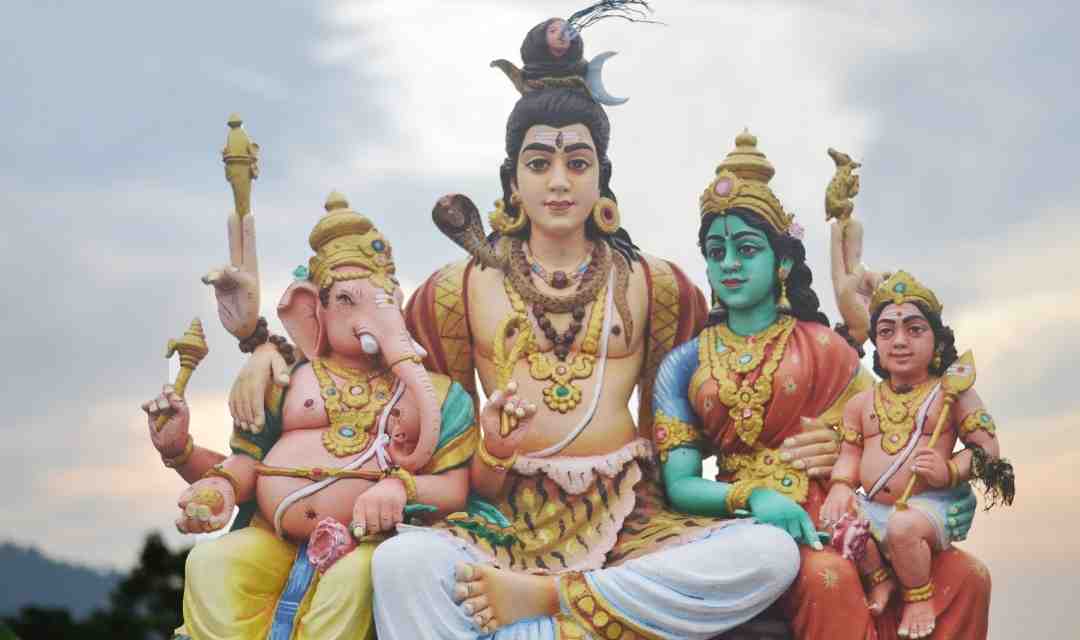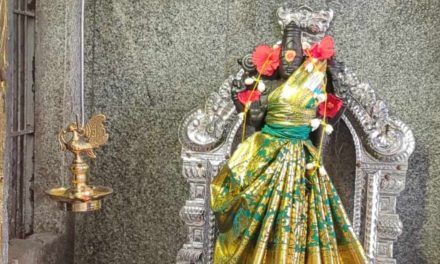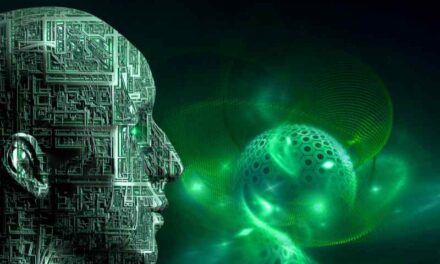Most Hindus do not believe that the deities of Hinduism are all-powerful, all-knowing, all-good, and omniscient. Rather, they believe that spirituality is the process of always searching for the ultimate truth that is out there, which may be obtained via many routes. Are Hindu gods omnipotent and eternal? Let us dive into it.
Hindus have long pondered the nature of God. Multiple theories and schools of thought developed in this search for God based on readings of texts such as the Vedas and Upanishads, observation and reflection, and meditation and spiritual experiences. Numerous Hindus see God as Brahman, or the Infinite. Brahman is considered to be eternal, all-powerful, and unfathomable.
According to some Hindus, Brahman is formless and attribute less, yet appears in form. According to some Hindus, Brahman has a transcendent form and characteristics. For Vaishnavas, this ultimate and transcendent form is Vishnu or Krishna; for Shaivites, it is Shiva. Additionally, the world is seen as a manifestation of Brahman and is referred to in certain traditions as God’s body.
Hindu conceptions of God vary from non-dualistic (the world and the Absolute are not two) to qualified non-dualism (the universe is distinct from but reliant on God and inseparable from God) to dualistic (the universe is distinct from but dependent on God and inseparable from God) (that the universe is both dependent and different from God).
Additionally, these perspectives vary from pantheism (all of existence is the Absolute) to panentheism (all of existence is contained inside the Absolute) to theism (the Absolute is external to all of existence). Hindu teachings stress that God is the source of all creation and that God permeates all things. At the same time, God transcends the earth and is not constrained by it.
Although brahman is an abstract notion, it is thought to manifest as murtis. The term “murti” is often translated into English as “image” or “idol,” although these are imprecise meanings. A murti is a powerful visual tool used by Hindus to contemplate the nature of and communicate with God.
Additionally, it is considered to be imbued with God’s presence, allowing Hindus to offer prayers and devotion to a murti. While Hindus believe God is present in a murti, they do not believe God is contained inside the murti. Thus, the word “embodiment” is more appropriate. God is regarded in two distinct ways: as immanent and transcendent.
In Hinduism, God is regarded as transcending gender, yet he is capable of assuming both male and feminine characteristics and forms. Brahma, the Creator, Vishnu, the Preserver, and Shiva, the Destroyer are all instances of many incarnations.
Goddesses such as Lakshmi, the Goddess of Wealth; Saraswati, the Goddess of Knowledge; and Parvati, the Goddess of Strength all take on female forms. Each of these deities focuses the Hindu worshipper’s attention on a particular element or characteristic of the divine. Other manifestations of God include Ganesh, the Obstacle Remover, and Hanuman, the Personification of Strength and Perfect Devotion.
Animals are often portrayed in depictions of Brahman in Hinduism due to the religion’s basic respect for the Divine or its essence in all things. For instance, Ganesha is shown with an elephant’s head, whereas Hanuman is depicted with monkey-like characteristics. Hinduism also accords Divine status to trees such as Ashwattha (Ficus religiosa), flora such as tulsi (Ocimum tenuiflorum), and rivers such as the Ganges and Yamuna.
Hindus believe that God may take on human form in the form of an avatar. For instance, God is believed to have assumed human form on earth as Rama, the paragon of virtue, or as Krishna, the kingmaker, in order to remove evil from the world at various points in history and establish justice.
Hindus may also worship to local deities, some of whom were once actual individuals, men and women, who reached such a high degree of enlightenment that they are regarded as manifestations of the divine. As a result, they may also be seen as manifestations of other significant Gods and Goddesses.
Hinduism encourages tolerance for different faiths and recognizes the truths contained in their teachings. This idea results in plurality both inside and outside Hinduism. As a result, the majority of Hindus see the diversity of faiths and ideas as alternative pathways to God. The Vedas include a statement that encapsulates the Hindu view on God: “Truth is one.” The enlightened refer to It by a variety of names.”
Hindu critics sometimes assert that the concept of God’s personality is limited. The purpose of this short sketch has been to demonstrate that Hinduism itself cannot avoid conceiving of God as a Person. Undoubtedly, some people are perplexed by the difference between the Absolute of philosophy (nirguna Brahman) and the God of religion (sagunta Brahman).
The monist’s eternal challenge is to demonstrate that there is no ultimate dualism between the two. And religious awareness is not to be regarded the dualistic human mind’s equivalent to metaphysical consciousness. Nonetheless, it is to religion, not philosophy, that man turns in times of greatest need.
He yearns for dialogue, for connection with a Power larger than himself, and reaches out for God via faith and devotion (bhakti). The songs of the Gaivite and Vaishnavite saints reaffirm man’s universal experience: when he seeks God, he finds God already pursuing him. Religion is social in nature. It is a time of friendship, of communion. It must be endowed with a personal God. And Hinduism is no different.
Vedic literature also provides information about man’s original idea of God or the Ultimate Reality: how man progressed from polytheism to monotheism, and how he reached monotheism.
The idea of ultimate Reality in the Rig Vedic tradition is unique. It has both monistic and dualistic elements. The Rig Veda expresses the whole process of nature’s origin and development (from a primordial condition) in mythical language. Parallel to the development of the idea of Reality, the concept of God has also evolved.
From prayers for a long and happy life (pashyema sharadah shatam jivema sharadah shatam) to high idealism, the Vedic mind is shown to develop. There are passages in which the devotee requests riches, wisdom, and success from different deities.
For example, ‘Dhiyam pusha jinvatu; May Pushan, the benefactor of everyone, be favorable.’ (2) On the other hand, the rishi states in certain passages that the same deity (Agni) manifests in different forms, including Indra, the giver of showers, and Vishnu, who protects the universe by living inside the hearts of everyone.
Numerous mantras and suktas in the Upanishads depict the development of the Vedic mind. For instance, the Kena Upanishad asks, ‘Keneshitam patati preshitam manah? Whose will is it that the directed mind pursues its object?’
While one might argue that the primary subject of the Rig Veda Samhita is the worship of gods and goddesses (devas and devis), the thread of the development of the idea of spiritual life runs through these many rites and songs.
The gods are portrayed in the majority of Vedic suktas as the governing and presiding powers over natural occurrences such as rain, storms, and thunder. Frequently, the same attributes are ascribed to different deities. The Vedic seers saw the moon, stars, sea, sky, sunrise, and dusk as divine occurrences, rather than as inextricably linked to inanimate nature.
Saraswati is referred to as ‘nadinam shuci’, which means ‘holy and pure among rivers. The rivers Vipash and Shutudri (modern Beas and Sutlej) are portrayed as rushing to the ocean under Indra’s command: ‘Indreshite samudram rathyeva yathah.’ Occasionally, it is claimed that the Reality behind the fire principle is identical to the Truth underlying the sun that illuminates the world; the same Reality underlying Ushas that renders everything effulgent, and so on.
External things, which he sees with his senses, are the sole reality for the average man living in this world. To him, God, whom he cannot see or hear, is just a word. Since he advances in logical thought and spiritual evolution, he understands that the world-phenomena he observes around him are always in change and therefore cannot be the ultimate Reality, as they are transitory.
As a result, he may see this universe as incomprehensible or indefinable. However, at the pinnacle of philosophical reflection and spiritual development, one understands that this phenomenal reality is only real in a relative sense. God is the one real Reality; everything else is impermanent.
According to the Mimamsakas, the devata is the incarnation of the appropriate mantra. This concept is particularly significant in terms of spiritual practice. At first, the aspirant regards the specific god as saguna (endowed with characteristics) and sakara (endowed with form), the exact embodiment of the mantra’s meaning. However, he progressively ascends to a higher position and advances to the next level of awareness.
In the majority of hymns referring to different gods like as Surya, Agni, and so on, we discover the same Paramatman as the underlying divine essence. The many gods and goddesses’ splendor is, in reality, the splendor of the same divine Reality.
The Kena Upanishad illustrates this concept via a tale (belonging to the Sama Veda tradition). According to the Upanishad, when gods such as Agni and Vayu grew arrogant of their erroneous grandeur, Brahman appeared before them in the guise of a yaksha and taught them humility.
Agni is Paramatman’s emblem, and all the other gods are various incarnations or facets of the same Agni. Numerous academics believe that Agni is the most suitable Vedic emblem for the highest rank among the countless Vedic gods.
Agni is the sun’s fire essence and also the one who brings our gifts to the other gods. He is man’s buddy and intercedes on his behalf. He is the embodiment of knowledge, wisdom, compassion, and dominion. That was why three thousand three hundred and thirty-nine gods worshiped him.
In the Vedic and Vedantic traditions, the ultimate absolute Reality is referred to as sat-chit-ananda (albeit it defies description or explanation). Agni, Surya, and Soma are the Rig Vedic sages’ emblems for sat, chit, and ananda, respectively. In other words, Satchidananda is comprised of Agni, Surya, and Soma.
Occasionally, particularly in the Upanishads, sat and chit are portrayed as facets of ananda (for example, ‘Anando brahmeti vyajanat; (He) experienced joy as Brahman’ (9). Perhaps this is why a whole mandala is dedicated to Soma.
There are no individual Vedic gods or Vedic deities distinct from the others or at odds with each other. As a result, both Varuna and Surya are sometimes shown as subservient to Indra. Varuna and the Ashvins often serve as Vishnu’s subordinates. In another context, a deity who is adored with others may be exalted to a superior status.
Varuna, for example, the rita controller, literally governs ‘the path of events and things.’ In Rig Vedic literature, rita is often used to refer to dharma, which serves as the cornerstone of Indian culture as a stabilizing force in all areas of individual and communal life. Are Hindu gods omnipotent and eternal? This literature explains the true concepts of Hinduism.





